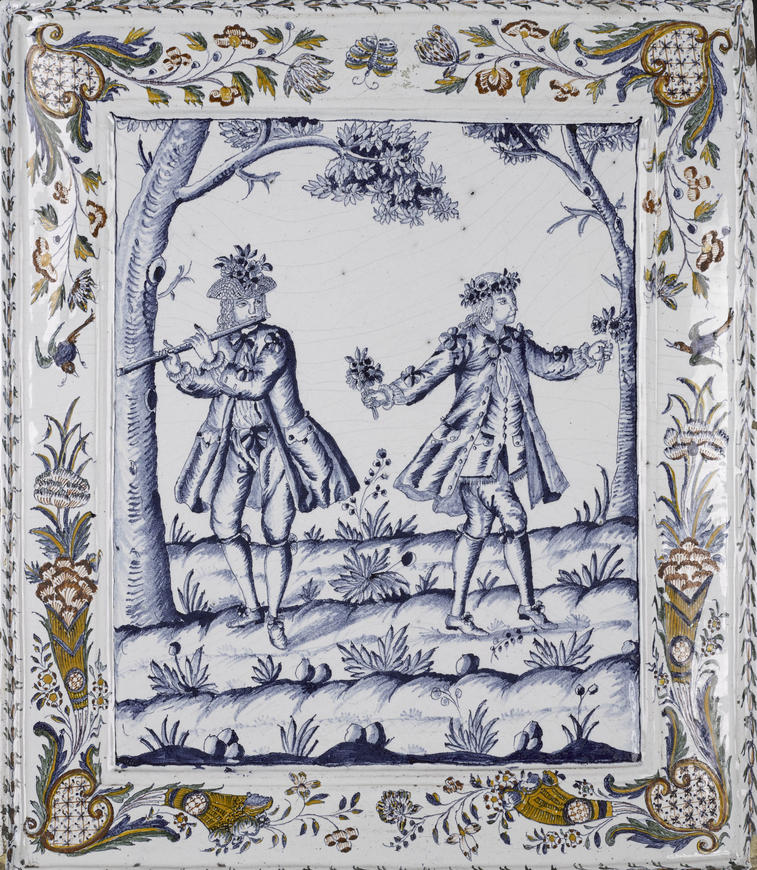Two distinct elements make up this faience or coloured earthenware plaque. The central part, which has shades of blue and white, and the broad border that frames it, which is polychrome. This association was fairly common in Lille in the XVIIIth century. However, the motif of the border, with its images of a horn of plenty, is rather typical of the faience of Rouen.
The central part represents two men, wearing flowers, celebrating the revival of spring. We have nicknamed it "the magic flute plaque", in reference to Mozart's sung piece, since the character on the left plays the flute.
Looking at it, the line of drawing for the border seems more fragile, less assured than the drawing of the characters in the centre. It may be that this piece was created in Lille and that for the border, the painter was inspired by an example from Rouen, which he slightly clumsily reproduced...
This plaque was originally part of a set of three objects; the other two elements depicting summer and autumn. By a happy combination of circumstances, in 2016 the museum received a donation of two earthenware plaques originating from Lille, which came from the same series.
We now know with certainty which factory the plaques came from! Indeed, the Masquelier factory in Lille produced large plaques, like this one. They also specialised in blue and white tiles! Moreover, we can see other examples of their production in the kitchen of the Hospice Comtesse in Vieux-Lille, now a museum.
Inventory number: C. 2519
Details : The flutes of the 18th century were wooden. This is why flutes, even today, are classified as woodwind instruments, although today they are made of nickel silver, which is a metal.

Two distinct elements make up this faience or coloured earthenware plaque. The central part, which has shades of blue and white, and the broad border that frames it, which is polychrome. This association was fairly common in Lille in the XVIIIth century. However, the motif of the border, with its images of a horn of plenty, is rather typical of the faience of Rouen.
The central part represents two men, wearing flowers, celebrating the revival of spring. We have nicknamed it "the magic flute plaque", in reference to Mozart's sung piece, since the character on the left plays the flute.
Looking at it, the line of drawing for the border seems more fragile, less assured than the drawing of the characters in the centre. It may be that this piece was created in Lille and that for the border, the painter was inspired by an example from Rouen, which he slightly clumsily reproduced...
This plaque was originally part of a set of three objects; the other two elements depicting summer and autumn. By a happy combination of circumstances, in 2016 the museum received a donation of two earthenware plaques originating from Lille, which came from the same series.
We now know with certainty which factory the plaques came from! Indeed, the Masquelier factory in Lille produced large plaques, like this one. They also specialised in blue and white tiles! Moreover, we can see other examples of their production in the kitchen of the Hospice Comtesse in Vieux-Lille, now a museum.
Inventory number: C. 2519
Details : The flutes of the 18th century were wooden. This is why flutes, even today, are classified as woodwind instruments, although today they are made of nickel silver, which is a metal.